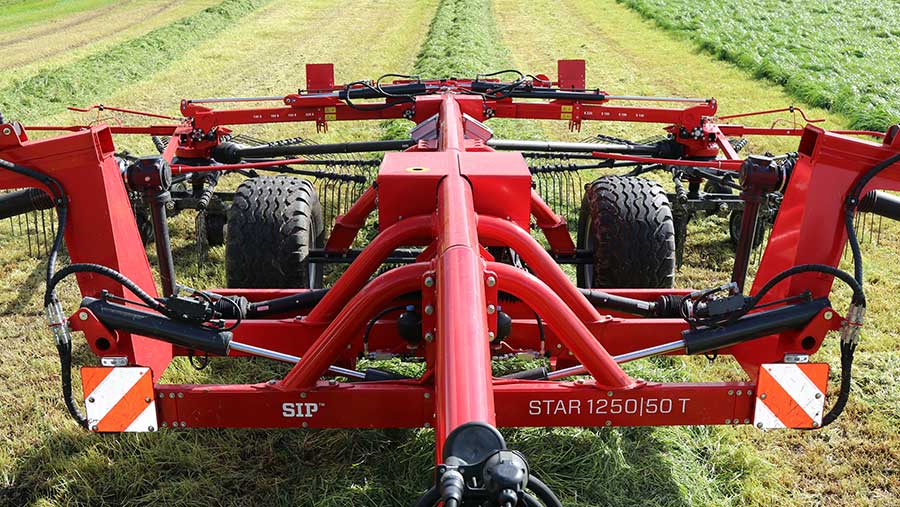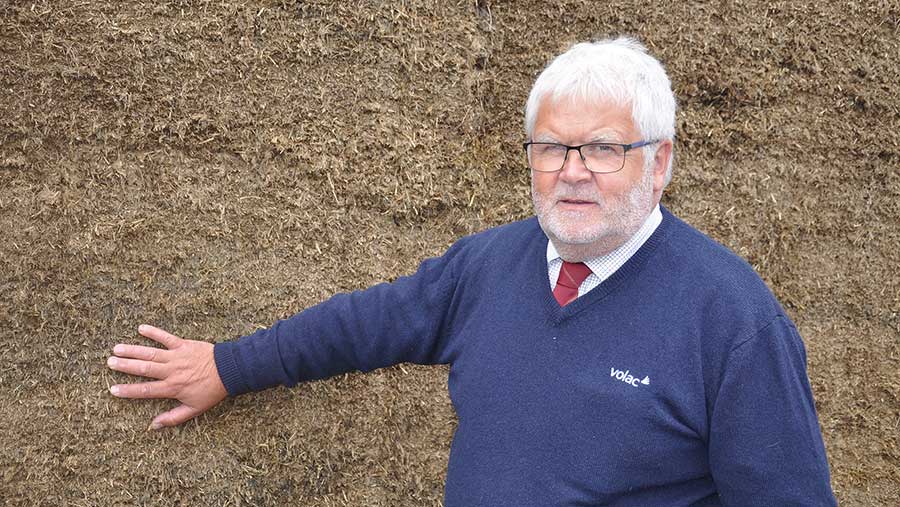Advertiser content
The need to maximise milk from forage is a ‘no brainer’
 © Volac Ltd
© Volac Ltd Although milk prices have dropped back recently, they are still well above previous pricing. But with high costs for certain inputs, producing milk cost-efficiently in 2023 will be key.
Which makes maximising milk from forage and silage a ‘no brainer’.
Those are the messages from Volac silage specialist, Peter Smith, who says feed costs account for a significant proportion of the overall cost of milk production, and milk is still having to be produced at elevated fertiliser prices.
So it is important to get a return on these investments.
“While purchased feeds are a key element in most rations, homegrown feeds will be the most cost-effective base to the diet,” says Mr Smith.
“By making better silage, so that more of the cow’s nutritional needs are provided by silage, it can help to ease feed costs.
“Although milk prices have declined from the highs of 50p/litre or so seen in 2022, they are still better than the 25p/litre seen a few years ago.
“So certain steps to improve silage that historically may have been considered marginal by some farmers could now give a much better return on investment.”
Improving silage
Pointing to ways of improving silage, Mr Smith says paying extra attention to cutting grass at its nutritional peak is key.
Too many fields are cut when grass has already headed, he says, but digestibility falls by 0.5 D units a day post-heading.
By one week post-heading, around 1.5 kgs more concentrate/cow/day will need to be fed to make up for this, he notes, in order to achieve the same milk yield.
Similarly, wilting grass rapidly so it can be clamped at the target % dry matter as soon as possible after cutting is vital, says Mr Smith, in order to minimise the losses in energy and protein that continue while cut grass is left in the field.
“Our research has shown that tedding immediately after cutting in the morning can reduce wilting time by as much as 80% from a standard 24-hour wilt,” says Mr Smith, “but another area where big gains are possible is from ensiling with a proven additive.
Increased return
“Here, our calculations show that, as milk price has increased from 25 to even just 40p/litre, the return from using Ecosyl has increased from £7.50 to £12.00/tonne of silage treated. This now represents about a 9:1 return on investment.
“This is based on independent dairy cow trials which have shown that feeding a range of silage crops preserved with Ecosyl boosted milk yield by an average of 1.2 litres/cow/day.
“So if one tonne of silage typically feeds 25 cows for a day, this extra 1.2 litres over 25 cows equates an extra 30 litres of milk produced per tonne of silage.”

© Volac Ltd By making better silage, so that more of the cow’s nutritional needs are provided by silage, it can help to ease feed costs, says Peter Smith of Volac
Other operations to focus attention on for good silage, says Mr Smith, include clamp consolidation. Many clamps are still not consolidated well enough, he says, which increases risks from poor fermentation and aerobic spoilage.
“Grass of 30% dry matter being loaded into a clamp at 100 tonnes/hour typically needs 25 tonnes of machinery rolling it constantly to compact it properly. Also, don’t skimp on clamp sealing and weighting,” he adds.
“Input costs and milk prices have been very volatile recently, which means controlling what you can on your farm, such as maximising milk production from homegrown forage and silage, is even more of a no brainer.”
Find out how Ecosyl could help you
Or e-mail: info@ecosyl.com
We also have available a limited number of FREE silage consultations. For more information visit: www.cuttoclamp.com/silageconsultation
Provided by
Volac the maker of Ecosyl – a silage additive independently proven to increase milk yield from silage*.
As well as providing scientifically-researched additives for a range of silage crops, Volac conducts research into other aspects of silage-making – such as wilting, and the benefits of multi-cut grass.
Volac’s UK team of silage experts is well-placed to offer guidance on enhanced silage techniques – whether cutting, wilting, treating, harvesting, clamping or feeding.
Learn more at: www.ecosyl.com or www.cuttoclamp.com. Or e-mail: info@ecosyl.com
* Based on independent dairy cow trials which have shown that feeding a range of silage crops preserved with Ecosyl boosted milk yield by an average of 1.2 litres/cow/day.
